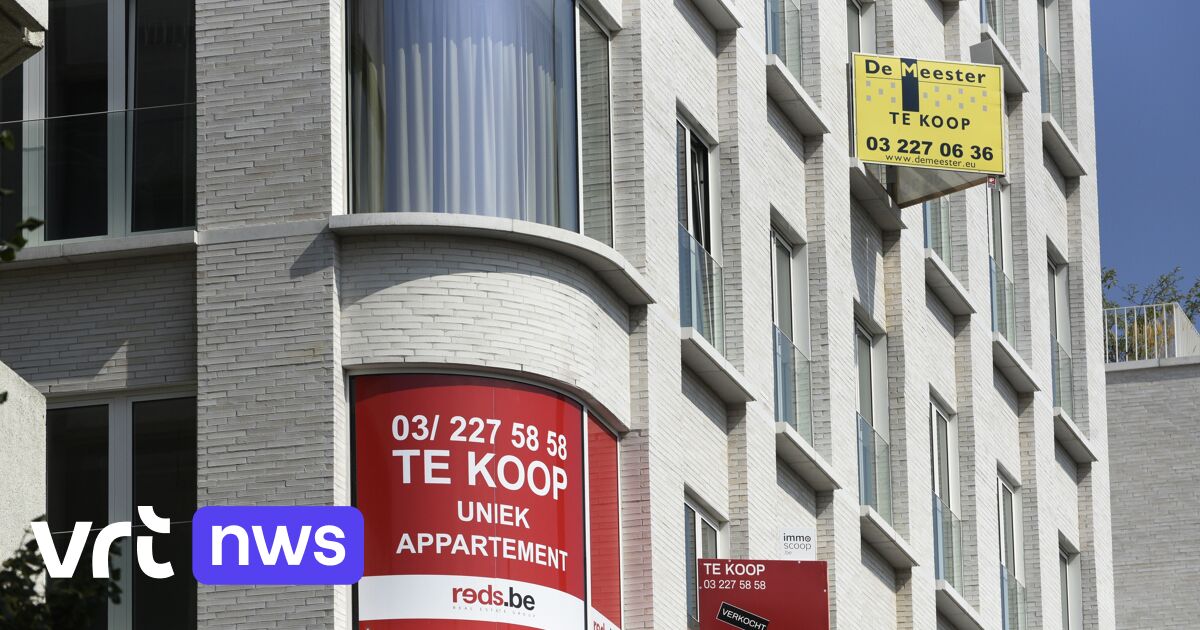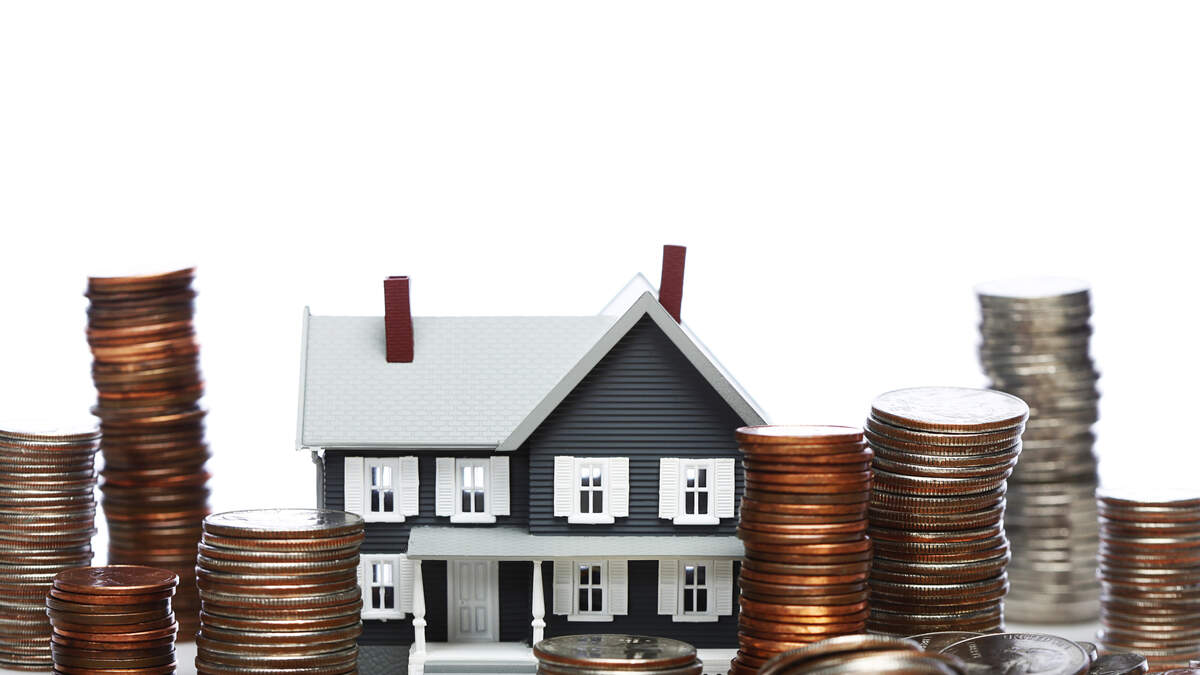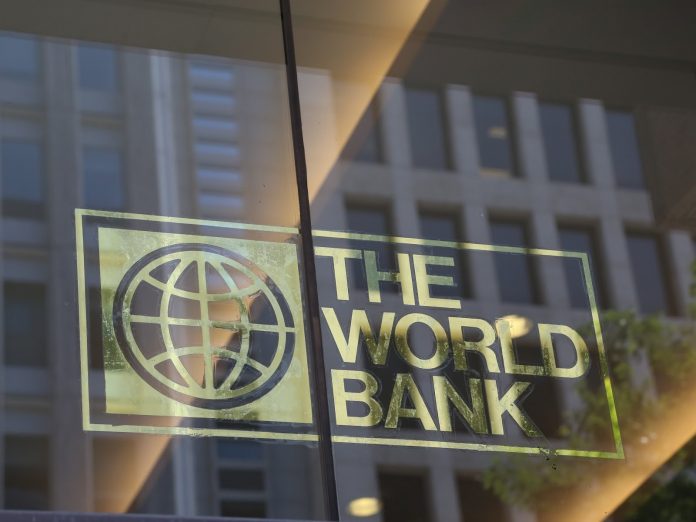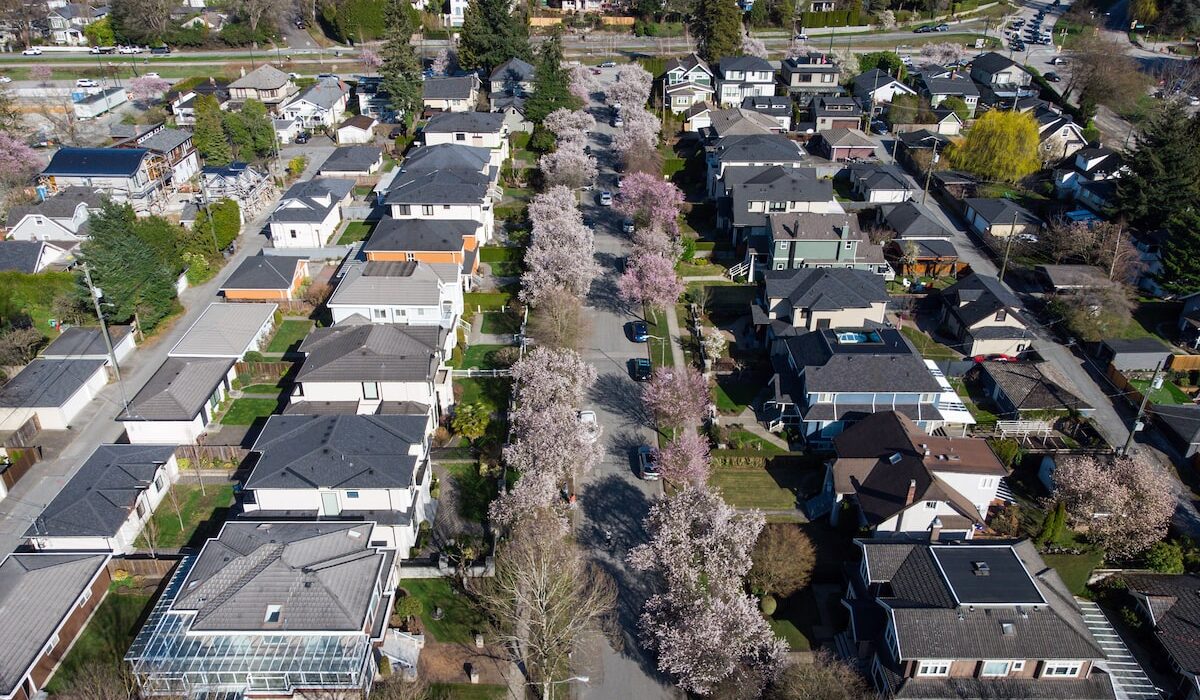The cooling of the property market started in 2022. “We saw year-on-year drops of about 15 per cent in 2023 compared to the previous year,” says notary Bart van Opstal.
“In the first three months of this year real estate purchases across the country were down more than 7 per cent, compared to the same period last year. In Flanders, we are even talking about a drop of more than 8 per cent. In Wallonia, we are looking at a 6.5 per cent drop. Only in Brussels did sales remain virtually stable.”
According to Van Opstal, the fact that the number of property sales has fallen during the last two years is not that surprising. “We obviously saw that buying spree during the pandemic, when interest rates were so low. That triggered extra volumes in the real estate world.”
“That was an exceptional period. We knew that the effect of that would wear off and we would get back to the more normal levels of before the pandemic.”
Sales drop below 2019 levels
If you look at the figures, you see that sales are now below 2019 levels, the pre-pandemic period. And that is striking, says Van Opstal. “We note that buyers in particular are less active. There is no real estate shortage in Belgium.”
According to Van Opstal, one of the reasons for this is the behaviour of young buyers. “Young people used to have a market share that hovered around 30 per cent. We see that this group is now less active, representing a market share of 27 per cent.”
“There’s a double explanation for that. On the one hand, a lot of young people bought property at an earlier age than usual when interest rates were very low. These young people are not buying a 2nd time now and so we don’t see them in the figures.”
“On the other hand, there are a lot of young people who are now waiting to see what happens. They are waiting in case interest rates come down and property prices fall. That would obviously make it easier and more interesting for them.”
Another group that has had an impact on falling property purchases are investors. “There were a number of interesting alternatives for investors of late such as the state bonds. They are now not only looking at real estate, but also at other investment formats.”
Property prices stabilising
The real estate barometer also shows that property prices are stabilising. A house in Belgium cost an average of 328,187 euros in the first quarter of 2024. In absolute terms, that is a price increase of 1.7 per cent compared to the same period last year. But if you take inflation into account, it amounts to a price drop of 0.6 per cent.
“In Flanders, the average price of a residential property rose by 2.4 per cent to 367,120 euros,” Van Opstal elaborates. “Taking into account the difference in terms of inflation, the price remained pretty much stable with an increase of 0.1 per cent.”
The average price of a house was on the rise in all Flemish provinces, if we do not take inflation into account. In Flemish Brabant, the price rose by 3.1 per cent, to an average price of 433,320 euros. There was an identical price rise of 3.1 per cent in Limburg to 317,594 euros.
In West Flanders, prices rose slightly more, by 3.8 per cent, to an average house price of 334,378 euros. In Antwerp and East Flanders, prices rose less: these were up 1.3 per cent and 1.9 per cent respectively. Taking inflation into account, the real price there fell slightly: down 1 per cent and 0.4 per cent respectively.
In Wallonia and Brussels, prices fell, even without taking inflation into account, by 0.3 per cent and 3.1 per cent respectively.
Abu Dhabi-listed Alpha Dhabi Holding is to sell a 49 per cent stake in its construction subsidiary to investment conglomerate ADQ as the UAE capital focuses on growing its infrastructure as it diversifies its economy.
The move aims to combine “the expertise and capabilities” of Alpha Dhabi Construction Holding and ADQ, Alpha Dhabi said in a statement on Tuesday to the Abu Dhabi Securities Exchange, where its shares are traded.
The size of the transaction, subject to regulatory approvals, was not disclosed.
Alpha Dhabi will retain the 51 per cent stake in ADCH, which, along with its subsidiary Trojan Construction, has worked on projects such as the Zayed National Museum and the Guggenheim Museum, and critical infrastructure such as the national railway network.
It has also worked on large-scale residential community projects for local real estate developers, including Aldar, Modon Properties and Emaar.
The collaboration “allows us to deepen our commitment to national development, enabling us to tackle complex, large-scale projects with a keen focus on safety, quality, and timely delivery”, said Hamad Al Ameri, chief executive and managing director of Alpha Dhabi and chairman of ADCH.
Alpha Dhabi, set up in 2013, has more than 250 businesses across health care, renewable energy, petrochemicals, real estate, construction and hospitality, and employs more than 90,000 people.
It reported a 45.4 per cent surge in its full-year profit for 2023 to Dh10.6 billion ($2.89 billion), as revenue rose 14 per cent annually to Dh45.4 billion.
The company’s portfolio in property and construction contributed 23 per cent and 19 per cent, respectively, to the total revenue.
In 2022, the company also increased its stake in Aldar Properties to become the parent company of the property developer.
The property and construction market in the UAE is growing, amid plans to support economic diversification as well as infrastructure spending to grow foreign direct investment.
The country’s construction market is estimated to reach more than $50.4 billion by 2029 from $41 billion in 2024, according to a report by Mordor Intelligence.
In Abu Dhabi, the construction industry grew by 14.3 per cent and contributed Dh25 billion to the emirate’s economy in the third quarter of 2023, according to official data from the Statistics Centre Abu Dhabi.
ADQ, which has 25 companies under its umbrella spanning sectors including energy, utilities, food and agriculture, health care, pharmaceuticals, mobility and logistics, is also expanding its portfolio locally and internationally.
The annual profit of companies within the group’s portfolio has been growing 20 per cent every year between 2019 and 2022, contributing 22 per cent to Abu Dhabi’s non-oil gross domestic product, Jaap Kalkman, group chief investment officer at ADQ, said in November.
Some of the companies in its portfolio include Abu Dhabi National Energy Company, better known as Taqa, the Emirates Nuclear Energy Corporation, Abu Dhabi Airports, Abu Dhabi Ports Group, Etihad Rail and Abu Dhabi National Exhibitions Company.
“With a long-standing focus on investing in infrastructure assets in line with our mandate, we welcome the opportunity to invest in ADCH as it enters the next phase of its … journey in spearheading the development of landmarks and coveted real estate developments in the UAE,” said Hamad Al Hammadi, deputy chief executive of ADQ.
Updated: April 18, 2024, 10:13 AM
Inflation is not only cramping Americans’ food and energy budgets, but it’s taking a bite out of the housing market. The combination of high interest rates and high prices continues to stifle the residential real estate market. The latest data shows mortgage applications have dropped for three straight weeks, while the average rate on a 30-year fixed mortgage has risen to 6.82%, up more than a half-percent from a year ago. At the same time, the average home price in the U.S. is at a record high. “Taking into account mortgage rates, incomes, and house prices, affordability right now is strained at the worst levels in about four decades,” says Lance Lambert, CEO of the real estate analytics firm ResiClub, in a recent interview with Fox Business.
With limited supply keeping prices elevated and the Federal Reserve keeping interest rates high to counter inflation, the market is caught in the perfect storm for buyers and sellers. “A lot of home buyers can’t get in, and a lot of home sellers can’t sell and buy something else because they can’t afford those new monthly payments,” says Lambert.
Faced with this latest economic challenge in an election year, the Biden administration is doing what it does best: blaming someone else. The same administration that tried to blame high gas prices on greedy gas station owners, and high food prices on ‘price-gouging’ corporations, is now blaming high home prices on…you guessed it…greedy real estate agents. “They’re scapegoating,” says Lambert. “They act like lowering commissions would improve housing affordability…you know, going after soccer moms making $60,000 a year, because that’s the only job that works around their kids’ schedule.”
Rather than attacking realtors, the administration should be implementing policies to increase housing supply and reduce inflation, according to Lambert. “Putting in tax policy that works for new construction and not against new construction, lower fees on homebuilding, all the boring stuff that would increase supply in the long-term…that is what would improve housing affordability,” he says.
The growth in the sale and rental rates of houses and apartments in Attica continued during this year’s first quarter, even though, as market executives note, a significant demand “fatigue” has begun to set in, especially with regard to buying and selling residential property.
Based on the latest data available from the online classifieds network Spitogatos.gr, in January-March the average sale price of residences in Attica was 2,350 euros per square meter, compared to €2,070/sq.m. during the same period last year, an increase of 13.5%.
Accordingly, as far as rents are concerned, the average asking rental price has now reached €9.6/sq.m., being 11.6% higher than a year ago, with no signs of even stabilizing.
Among the individual regions, the largest increase in asking sales prices is still found in Piraeus: On an annual basis, the increase now reaches 27.3% to €2,333/sq.m., while in the suburbs of Piraeus the average asking price is now €1,875/sq.m., increased by 25% on an annual basis base.
These increases are due to the shift of Golden Visa program investors to the Piraeus area, where the minimum investment amount remained at €250,000, against €500,000 required from August 1, 2023 in the center of Athens and the northern and southern suburbs. However, a large increase of 14.6% is also observed in terms of the asking prices in the center of Athens, where the average price now reaches €2,073/sq.m., from €1,810/sq.m.
The following months are expected to be decisive for the future course of prices and the possibilities of their stabilization or even correction in some areas, given that new changes to the Golden Visa program are being promoted, with the minimum investment limit for the whole of Attica increasing to €800,000.
In the rental market the picture looks particularly difficult for those looking for a home, as even in the center of Athens the average asking price has now increased to €10.36/sq.m., or 10.4% higher compared to last year’s first quarter.
Ever since the Federal Reserve began hiking interest rates to fight inflation in March 2022, the real estate industry has been stuck in a deep freeze. High mortgage rates and even higher home prices have made buying a new home nearly impossible for many Americans; renters are facing record costs; and the commercial real estate sector is stuck in a nightmare scenario. Shifting working trends and rising borrowing costs slashed commercial real estate values by $590 billion in 2023 alone—and another $480 billion is expected to evaporate this year, according to Capital Economics.
While the pain has been severe for many in the real estate industry over the past few years, some veteran operators see opportunity. After all, the old saying in investing is “buy low, sell high,” and that means not everyone is running scared from this real estate market.
Hines, a global real estate investment, development, and property manager with $93.2 billion in assets under management, is even launching a platform that will enable wealthy clients to access new opportunities in real estate called Hines Private Wealth Solutions. With an increasing number of investors looking to allocate up to 30% of their portfolios to alternatives as the shift away from the classic 60-40 portfolio of stocks and bonds continues, Hines hopes to provide an easy way to gain diversified, global real estate exposure and capitalize on the $85 trillion of expected growth in the private wealth space over the next decade.
The company has hired Paul Ferraro, formerly the head of Carlyle Private Wealth, to lead the global private wealth strategy, and raised $10.7 billion for the venture as of Dec. 31.
Hines’ platform will offer a wide variety of real estate investment solutions for clients, including non-traded private real estate investment trusts, private placements, private debt, tax-deferred exchanges, development projects, and more. The company will also provide advisory solutions for clients that need direction when managing their personal real estate holdings.
As Hines’ global chief investment officer, David Steinbach, told Fortune, the goal of the new platform is to help investors take advantage of the beginning of a new real estate cycle, meet specific risk/return objectives, and reduce portfolio volatility.
“This is a great vintage, it’s a great moment,” he said. “This real estate correction began really over two years ago, right when the Fed started raising interest rates. So we’re two years into a cycle, which means we’re near the end.”
A multi-year real estate recovery comes into view
In a soon-to-be released white paper seen exclusively by Fortune, Hines’ team of researchers detailed their belief that the real estate industry tends to run in what they call “long cycles” that span 15 to 17 years. After one of these long cycles, there is typically a downturn that lasts, on average, 26 months. Hines’ researchers argued we’re in such a downturn now, and it’s coming to an end, which should provide a long-term opportunity for real estate investors.
“Real estate investing in the next 6-8 months may allow participation in the multi-year recovery, with investors enjoying the benefits of possibly rising income from distributions, stability in value, downside protection, and capital appreciation supported by cash flow growth as rents respond to the higher inflation expected,” they wrote.
Steinbach told Fortune that, like many experts on Wall Street, he also believes we’re in the midst of an economic “regime change” that will benefit owners of real assets like real estate, rather than financial assets like stocks. After years of near-zero interest rates and low inflation prior to the pandemic, he says we’ve entered an era of higher inflation, and thus, higher interest rates that is set to last. “And so in that world, you want to own real things,” he explained. “And I think that that’ll end up shifting some of the split that investors have allocated money to historically. It’s been kind of a 60-40 [stocks-bonds] split, and I think we’re moving to a 40-30-30 world of equities, fixed income, and private [alternatives].”
To his point, Goldman Sachs noted in a 2022 analysis, that real estate has historically provided a “strong” hedge during periods of inflation, because rents tend to re-price higher, boosting real estate investors’ income, and existing holdings also appreciate in value due to rising construction costs.
However, rising interest rates can become costly for real estate investors that borrow heavily, too. That’s why, according to Steinbach, the key to benefitting from the ongoing “regime change” is to hold high quality real estate that is spread around the world; reduce the use of leverage as much as possible; and to look for new opportunities in places like data centers which are being driven by AI.
And, he says, that’s what Hines Private Wealth Solutions will provide.
Nevertheless, Steinbach acknowledged that the easy days of near-zero interest rates are now clearly over for the real estate industry, arguing it’s like “going from downhill skiing to cross country skiing.” That means investors will need to be more selective in order to find the right opportunity. “It’s about hard work right now. And I think it will be for the next decade. If you’re willing to do it, I think there’s a great reward, but it’s gonna be hard work,” he said.
Higher returns, lower volatility
Beyond the opportunities within the coming “regime change,” Hines hopes to draw in wealthy investors to their new private wealth platform by emphasizing that, at least historically, adding real estate to portfolios has improved returns and reduced volatility. In fact, Hines found that adding 15% global real estate exposure to the classic 60-40 portfolio of stocks and bonds has increased the average annual total return of that portfolio from 6.12% to 6.4%, and reduced its volatility from 11.3% to 9.9%, since 2000.
Hines will offer a number of strategies with various risk tolerance levels for clients to take advantage of the volatility reducing and return juicing abilities of real estate. From a return-seeking “opportunistic” approach that will take more risk to its core strategy of stable income with moderate price appreciation, the company hopes to cater to individual investor needs with its platform.
Steinbach said he is also leveraging the experience of Hines’ local offices around the world to “create diamonds from the rough” that the real estate industry is currently facing. But he noted that after such a dramatic downturn in many real estate sectors, there are also a number of well-priced assets worth buying that don’t need a facelift. And with the U.S. still facing a housing shortage, Hines’ development of new properties is likely to be a winning strategy as well, Steinbach argued.
The real estate veteran concluded by emphasizing that he hopes investors take advantage of what he sees as a golden opportunity in the industry that doesn’t come around too often.
“It’s a moment that I don’t want to let pass by because these windows do close eventually,” he said. “I’ve seen a couple in my career, and I won’t see too many more. I mean, you don’t get many windows like this. So I think we’re at a unique moment that people need to be alive to.”
The American dream for so many aspiring homeowners has been stifled in recent years amid surging interest rates, steep inflation and low inventory.
However, HGTV stars Elizabeth and Ethan Finkelstein, hosts of the “Cheap Old Houses” series, cracked the code on overcoming significant market changes through a “house hack” that they share with Americans around the country.
“There’s the American dream of go get a bigger house, go get a bigger car, go get a bigger television, all that, but there’s also the American dream of pick up your bootstraps and figure it out and get creative, and those are our people,” Elizabeth told Fox News Digital exclusively. “I think that our people are living that American dream of building your own life and figuring it out.”
“There are hacks to the system. If you have that creative American spirit in you, then you are in every bit living the American dream through a cheap old house,” she continued.
The pair, who started their now-viral Instagram page long before the pandemic, are placing a spotlight on historic homes for record-low costs in hopes of locating an aspiring homeowner who may not have been able to break into the housing market.
The homes are often priced under $100,000, are more than 100 years old and need restoration work.
“The housing system is broken. No one can afford our house right now,” Elizabeth said. “Especially the generation that has grown up on social media, which is the generation we’re talking about, which are younger people saddled with so much debt already right out of school, and the idea of homeownership is such a pipe dream.”
“We love old houses. We grew up in them. To us, a natural solution to this is to take advantage of a house that you can get at a lower price point, come in, fix it up,” she continued. “You’re not only preserving history, but you’re also getting yourself in the door of a market that so many people feel like they can’t access.”
Home prices and associated costs have followed the same inflationary trend as the rest of the economy since President Biden assumed office in January 2021.
Compared to three years ago, the median price for existing-home sales has increased 25%, from $307,400 in January 2021 to $384,500 in February 2024, according to National Association of Realtors (NAR) data.
Not only are house prices up and supply down — home loan costs have skyrocketed. As of February, the monthly mortgage payment on an existing home was $2,001, according to NAR. That compares to a January 2021 reading of $1,009 and represents a walloping 98% increase. Mortgage rates, which were an average 2.79% in January 2021, are now 6.78%.
Ethan argued, however, the market for cheap old houses is largely insulated from market changes. He cited a consistency in their “house hack” despite COVID-19, inventory changes and other economic woes in recent years.
As a result, aspiring buyers have been able to secure their investments despite variable market “swings.”
“I think cheap old houses [have] constantly been insulated from the market of all the swings,” Ethan said. “We’ve seen so many different markets throughout the years. COVID… there was huge price increases. Throughout the lumber crisis, there was all these shortages on what we had as inventory… we were restoring buildings during that time, we didn’t have price spikes because we were fixing what we already had.”
“Now we have interest rates that are super high,” he continued. “You know how we’re avoiding the interest rates? We’re buying houses that are super affordable and really low-priced to keep the interest rates down. We have friends who have bought cheap old houses, who have moved from renting for $2,000 a month, who are now mortgaging a house for under $600 a month because they bought a $100,000 house. It’s kind of a house hack that we just love.”
“This is not a get-rich-quick scheme,” he said. “This is really a sustainable solution for people to find housing that is affordable, potentially move their location, and live in one of these cheap houses and hack the system.”
The pair detailed how the most rewarding part of their business venture is watching homeowners go step-by-step through their entire journey, witnessing them restore and utilize their very own cheap old house.
“There’s so much that’s rewarding about what we do,” Elizabeth said. “We love that we’re not contributing to the environmental issue we’re all facing right now, that we’re reusing materials that are already in buildings, that we’re learning how to repair things. I think we have an economy now that’s based on new… new is always better, but we’re learning how to fix things, and people are learning new skills and feeling like they can do this on their own.”
“I think seeing people’s lives change through these houses has been incredibly rewarding for us,” she continued. “I think [when] we started this, it was so much about the houses and getting the houses in the hands of people as an alternative to this completely ridiculous housing market, and we found that it’s so much about the people.”
The Finkelsteins are set to premiere in their newest series on HGTV, “Who’s Afraid of a Cheap Old House?” where the duo continue their work with the nation’s historic, hidden gems. In the show, set to premiere in April, they follow homebuyers through the process of purchasing and restoring their renowned masterpieces.
“We show that you can take the worst house on the block and make it look absolutely beautiful, and it’s worth investing in these homes,” Elizabeth said.
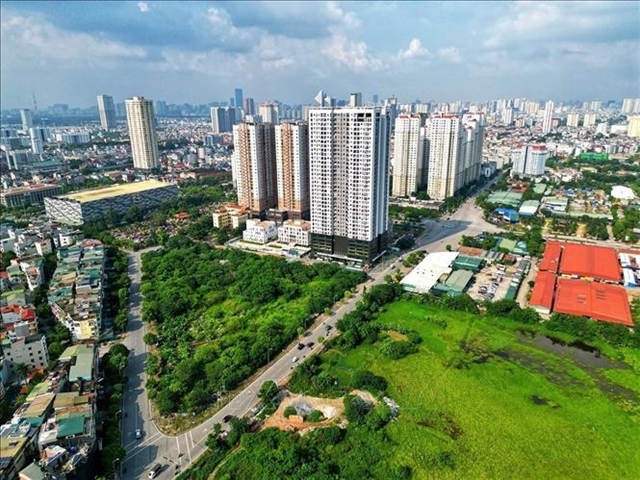
|
| Việt Nam’s real estate market attracts foreign investors in all segments. — VNA/VNS Photo |
HCM CITY — Việt Nam’s property market is attractive for foreign investors, according to experts.
The attraction is not just in terms of certain locations and segments but across the board.
Nguyễn Trọng Toàn, investment manager at property consultancy Savills’s Hanoi office, said every segment has its own charm for foreign investors.
In the residential segment, they are seeking investment opportunities and developing projects under their own brands amid scarce supply and high demand for housing, he said.
They leverage their advantages in branding, design and construction standards and quality, he said.
In the office segment, the market is seeing growing demand from energy, manufacturing and consulting businesses, which is keeping occupancy rates steady.
In major cities like Hà Nội, Đà Nẵng and HCM City, the segment offers increasing opportunities for foreign investors to position their products to meet green standards such as LEED, WELL and BREEAM certification.
In the Hà Nội property market, Toàn said foreign investors are not focusing just on central districts but are also looking elsewhere.
This is also a move to capture the shift by private offices and the development of urban transportation infrastructure, he said.
In the retail sector, the entry of retail giants underlines the prominence and attractiveness of the country.
In February Central Pattana, a retail powerhouse under Thailand’s leading retail conglomerate Central Group, prepared to establish a legal entity in Việt Nam to enter the vibrant market.
Earlier, after opening its third Emart hypermarket in HCM City, THISO (a subsidiary of THACO) unveiled plans to expand in the north with a fourth by acquiring a 2.4-hectare land plot in the Tây Hồ Tây Urban Area in Hà Nội City.
The hotel segment is also showing signs of recovery.
According to Savills Việt Nam’s Market Report, hotel occupancy rates and tariffs have increased in Hà Nội City and HCM City.
Last year, occupancy rates increased by 21 per cent in Hà Nội City annually and 18 per cent in HCM City.
Foreign investors are more open to various forms of investment to maximise the potential of the market, Toàn said.
After researching the market well, many foreign investors are also considering investment opportunities outside major cities. — VNS
Data is delayed by 20 minutes
Data is delayed by 20 minutes
To see more commodities please register for our portal
There’s a widely held belief that real estate prices will, inevitably, only rise higher and higher. There are, however, long periods when that maxim is decidedly not the case.
Toronto is a prime example. After a surge in the 1980s, the Toronto market peaked in 1989 and didn’t regain that high until 2002 – more than a decade later. A 1995 peak in Vancouver was the high-water mark until eight years later. In the United States, it took a decade after the 2006 peak before that level was seen again.
Each example is different yet each shares central elements, from burst bubbles after manias to the gyration of interest rates and economic woes. What’s clear is real estate can go sideways for a long time, even if everyone believes the natural direction is up.
As Canada works to build a path to housing affordability, the most important thing is new supply – a lot of new homes. But just as important is changing the culture, the mindset that prices are destined to escalate.
Housing has long been expensive but the situation is now extreme. Five years ago, about 60 per cent of households could afford a condo. Last year, it was less than half. And that’s for a condo.
After many years of dizzying gains in the price to buy or rent a home, it’s become widely clear that higher and higher isn’t ideal and comes with many costs.
How to restore some semblance of affordability has shot to the centre of the political debate. This week, Canada Mortgage and Housing Corp., which has called for millions of new homes, held a conference on the question in Ottawa. The Globe on Wednesday illuminated how we got here in a series of charts, from record-low rental vacancies to the way-too-long time it takes to get new housing approved and built.
Many new homes are needed, yes. As this space showed last week, a burst of construction in booming Austin, Tex., has helped reduce the price to rent.
The shift in entrenched philosophy is also necessary. We need to rein in the housing market mindset that up is good, so pervasive in North America.
The mentality leads to speculation, starting with many families betting on the ever-rising value of their home as a pot of retirement savings. Generation Squeeze, an advocacy group for younger Canadians, puts it this way: “break the addiction to high home values.”
The celebration of higher home prices is deeply ingrained. Ownership in Canada peaked in 2011 at almost seven out of 10 households. Almost all political leaders own their homes and many are landlords. That’s the reason that as things started spinning out of control in the 2010s, blame was first cast on factors such as foreigners or investor speculation without grappling with the real problem: not enough housing.
In each example of real estate markets going sideways for a long time, Toronto, Vancouver, the U.S., it was always considered bad news. The Wall Street Journal lamented Austin’s shift from “America’s hottest housing market” to “running in reverse.”
The bigger goal is to rein in prices, bring them closer to people’s incomes.
The Teranet-National Bank house price index shows the price of housing rose 4.2 per cent annually from 2000 to this year, excluding inflation. Household incomes, according to Statistics Canada, rose by far less, about 1.2 per cent a year from 2000 through 2021.
The goal of a steady surge of new supply would be to establish a lasting buyer’s market. Critics of new supply will often say it won’t ease prices but big housing investors specifically warn shareholders that “competition for residents” and an “oversupply” of homes will affect the prices they charge.
Instead of hoping and cheering prices will someday soon recoup and exceed previous highs, the target has to shift to an extended, and welcome, period of nominal gains. If home prices this century had risen at only the rate of inflation, they would be less than half of what they are – and at levels last seen in 2006. Beyond a return to affordability, a market that offered such nominal returns is what would undercut and eventually end housing speculation.
Decades of culture and policy got us here. It will take time to restore affordability. It will take time to change the culture. But as Canada sets the initial foundations to allow for many more new homes, it is starting on the path to affordability.


